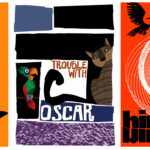For fans of 1990s television, the name Salem Saberhagen conjures up instant recognition. More than just a pet, Salem, the black cat from Sabrina the Teenage Witch, was a scene-stealer, delivering lines with a dry wit that resonated with audiences of all ages. Voiced by Nick Bakay, Salem’s cynical humor was a unique ingredient in the show’s family-friendly formula, offering a layer of wryness that elevated the sitcom beyond typical teen fare.
Bakay himself recognized the special license afforded to Salem as a non-human character. “It’s that weird thing where animals and puppets can kind of get away with murder,” he explained. “Everyone else has to keep their act a little bit cleaner. The cat was very much the beneficiary of all those sort of little sideways pitches that might not have made it in if they were delivered from a human.” This allowed Salem to deliver some of the show’s most memorable and sarcastic lines, often commenting on the absurdity of the situations around him.
The brilliance of the Salem character wasn’t just in his delivery but also in his backstory. As Bakay pointed out, “The great thing about the character is he’s a power madman who’s been consigned to live as a cat, as punishment for trying to take over the world. So, you know, that formula right there, it’s just hilarious.” This dramatic irony – a once powerful warlock reduced to feline domesticity – was a constant source of comedic gold. The contrast between his grand ambitions and his mundane reality, “gone from world domination to staring at a piece of lint floating by, on a pillow in a teenage girl’s bedroom,” as Bakay described, fueled much of his humor. This inherent bitterness and frustration became Salem’s comedic trademark.
However, the journey to bring Salem to life on screen wasn’t without its hurdles. Network executives at ABC were initially hesitant about the animatronic puppet. Built for the show’s first season by animal fabricator and puppeteer Jim Boulden, the Salem puppet prioritized character over realism. “ABC did not love the animatronic cat,” Bakay admitted. “And I get it: it’s not like it was going to fool anyone.” Despite the lack of photorealism, this slightly artificial quality became part of the show’s quirky charm. Bakay elaborated, “But I think that it was part of the charm of the show—quaint, old-school practical magic and weird cat puppets. And for some reason, it kind of worked.” This embrace of practical effects and a touch of the absurd contributed to the show’s unique identity.
The on-screen magic of Salem was the result of a collaborative puppeteering effort. Two main animatronic puppets were created: one sitting and one lying down. Operating Salem required a team of skilled puppeteers. Thom Fountain was responsible for the crucial mouth movements, synchronizing them perfectly with Bakay’s voice performance, which was delivered live on set. Jim Greenall, who also designed the puppet’s mechanics, controlled the subtle yet expressive ear and tail movements remotely. On set, Mauri Bernstein was the puppeteer tasked with bringing Salem’s body and head to life. Her work often involved maneuvering in tight spaces, “behind tables, beneath the sofa, or under Sabrina’s bed,” as Bernstein recalled. The physical demands were considerable, leading her to seek regular massages to cope with “the flexibility to get squished into various places.”
Early on, the puppeteering team experimented with Salem’s behavior, seeking the right balance between realism and cartoonish exaggeration. Bernstein explained, “I think ultimately we came up with sort of something in the middle, where he was definitely a comedy character, rooted in actual, literal cat behavior, but not limited to it.” This nuanced approach allowed Salem to be both believably feline and hilariously expressive, enhancing his comedic impact.
The combined efforts of Bakay, Fountain, Greenall, and Bernstein created a seamless and convincing performance. “We got it to the place where Salem worked as a unified whole,” Bernstein affirmed. The success of their collaboration was evident in the audience reaction, particularly among younger viewers. As Bernstein noted, “a lot of younger viewers were indeed convinced Salem was entirely real.” The show even received letters from children asking, “How did you get it to talk?!” This testament to the believability of Salem Saberhagen, the cynical Sabrina the Teenage Witch cat, highlights the enduring appeal and masterful execution of this beloved television character.


